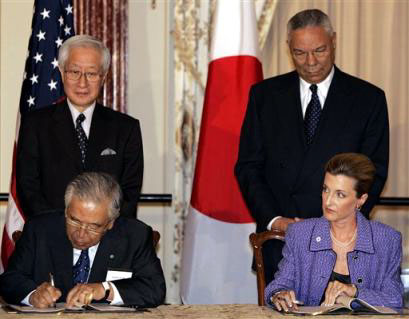“U.S. participation in world expositions highlights the attributes that make America great but also plays a critical role in creating and closing business deals and underscoring the critical bilateral relationship between the U.S. and the host country. At the Aichi 2005 World Expo in Nagoya, Japan, I was honored to serve as the first female U.S. Commissioner General. For me, as an entrepreneur and businesswoman – and working mother – the US Pavilion’s theme of hope, optimism, enterprise and freedom resonated on both a personal and professional level and were unique American characteristics I was privileged to share.”– Lisa Gable
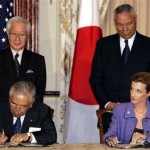
This article, originally published in March 2014, is part of “Tales from the Expo,” an InPark Magazine online book written by James Ogul and edited by Judith Rubin.
[dropcap color=”#888″ type=”square”]W[/dropcap]ith only 14 months until opening day, preparations for Milan Expo 2015 (set to run May 1 – October 31) are moving along at a rapid pace and the U.S. Pavilion team in addition to its vigorous fundraising effort will be looking to appoint a Commissioner General of Section (CG), who will be the head of the U.S. Pavilion. Over the years, I’ve worked in some capacity for 10 U.S. Commissioners General. For many countries the Ambassador to the host country double-hats as Commissioner General of its pavilion, but the U.S. has done that only once in recent history, for Yeosu Expo 2012 in Korea. All of the others were special appointees, typically serving pro bono, and accorded the personal rank of Ambassador. (The personal rank of Ambassador is a Presidential appointment with a 6-month duration and does not require Senate confirmation, pursuant to the Foreign Service Act of 1980.)
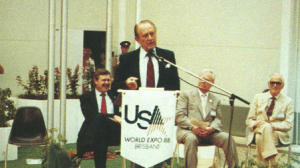
The CG typically serves without compensation but with travel expenses and housing provided by a private sector partner through a gift account set up by the Department of State. The official title for the position is Commissioner General (Expert). There would be no retirement, leave, health, or insurance benefits. CGs have typically required a security clearance.
BIE regulations for CGs
By way of background, the Bureau of International Expositions (BIE) is the international body that regulates World’s Fairs, and was formed in 1928. The U.S. joined the BIE in 1968, but withdrew in 2001 because Congress had failed to appropriate dues three years in a row. Even though the U.S. is no longer a BIE member, the country follows the BIE regulations with regard to Commissioners General.
The BIE regulations state that the Government of any State participating in an exposition shall appoint a Section Commissioner General to serve as its representative to the inviting Government (the Government hosting the World’s Fair.) The Section Commissioner General is responsible for the organization of his national display and informs the CG of the exposition of the composition of that display and sees that the rights and obligations of exhibitors are respected. The BIE further defines a National Section as all the exhibitors of the country concerned, including federal, state and corporate exhibitors, but excluding concessionaires.
As for participation in World’s Fairs, the President is authorized by Congress to provide for U.S. representation at world’s fairs under section 102(a)(3) ofthe Mutual Educational and Cultural Exchange Act of 1961, as amended (“Fulbright-Hays”). That authority was delegated to the Director of the U.S. Information Agency during USIA’s existence. With the consolidation of USIA and State in October 1999, the authority was transferred to the Secretary of State and then immediately delegated to the Under Secretary for Public Diplomacy and Public Affairs (Foreign Affairs Reform and Restructuring Act of 1998; Delegation of Authority No. 234, October 1, 1999). On August 28, 2000, the Under Secretary delegated to the Assistant Secretary for Educational and Cultural Affairs the authority to perform the functions listed in section 102 of Fulbright-Hays (including matters relating to international expositions) (Delegation of Authority No. 236-3).
Role of the CG for a U.S. expo pavilion
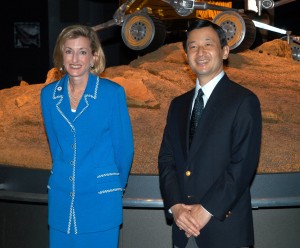
The major duties of the Commissioner General are to:
- Oversee the U.S. Section at the Expo. For the upcoming Milan Expo 2015, the U.S. Section will consist of a 30,000 square foot building (“Pavilion”) housing an exhibition to be designed, fabricated and operated by a non-profit organization. The name of this organization is Friends of the USA Pavilion at Milan Expo 2015. At present, the Friends group is working to raise the estimated $45 million required to fund the project.
- Represent the U.S. Government to the Government of the host country (such as Italy for 2015) on issues relating to the Expo through attendance at International Planning Meetings and meetings of the College of Commissioners General, as well as at protocol events such as Opening Day and National Day ceremonies. (Note: Because the United States is no longer a member of the BIE, the Section Commissioner General can attend College of Commissioners General and other organizational meetings as an observer.)
Represent U.S. state, municipal and corporate participants at the Expo (such as Milan 2015) in any disputes between them and either the Expo organizers or the host government. The U.S. Section Commissioner General shall also resolve any disputes that may arise among the American participants.
Interact with the business community as necessary to secure support for the U.S. Pavilion, represent the project to U.S. corporations and serve as liaison with executives of participating corporations. Ensure that corporate participation is solicited, received and used in accordance with applicable laws and regulations, including regulations concerning conflict of interest, and that corporations fulfill their responsibilities under participation agreements.
Interact with state and local governments as necessary to secure state and municipal support for the U.S. Pavilion and exhibition, represent the project to said governments and serve as liaison with mayors or governors of participating municipalities and states. The Section Commissioner General shall ensure that municipal or state exhibitors fulfill their responsibilities under participation agreements.
As necessary, report to the Secretary of State or his designee, the President. and the Congress on the status and outcome of U.S. participation in Milan Expo 2015.
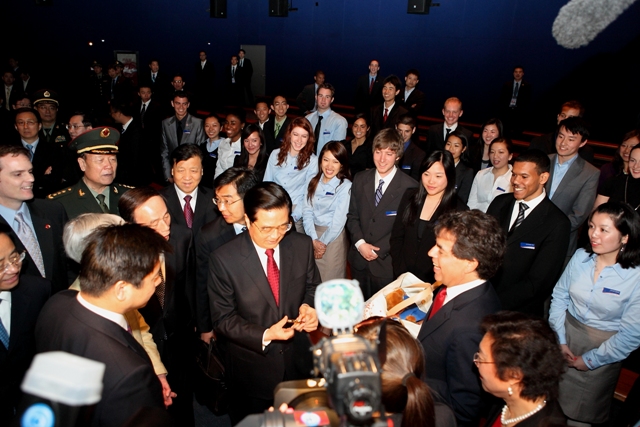
A Commissioner General is typically appointed prior to, and is responsible for, the signing of a U.S. Participation Contract with the Expo Organizer. The appointment of a Commissioner General typically extends three months beyond the end of the world’s fair, allowing time for the preparation and submission of a final report on the status and outcome of U.S. participation.
The U.S. State Department is responsible for writing a position description for the Commissioner General incorporating the major duties listed above.
One of the duties of the CG is to submit a final report on U.S. Participation. Here is an excerpt from one of those reports.
“It is but just to the President and Secretary of State to say that they advised early and liberal action upon the part of Congress. It is but just, also, to all concerned, to say that the delay upon the part of that body, in authorizing participation to the Exposition, made it necessary to do in much haste what should have been done with much deliberation. Many of our manufacturers and artisans declined to become exhibitors, saying that they could do justice neither to themselves nor to the country, within the few months or weeks allowed them for preparation.”
The date was 1878 and this was the report for U.S. Participation in the Exposition Universelle in Paris. Amazing how times have not changed!
Names of U.S. CG appointees
Here is a list of CG appointees for U.S. expo pavilions going back to 1985. (Note: for smaller scale expos such as Yeosu 2012, the title is Commissioner rather than Commissioner General.)
Yeosu Expo 2012: Amb. Sung Y. Kim (U.S. Ambassador to Korea)
Shanghai Expo 2010: Jose Villarreal, Consultant to Akin Gump Strauss Hauer and Feld LLP.
Aichi Expo 2005: Lisa Gable was selected by the White House and was the first woman to serve as Commissioner General for a U.S. Pavilion at a BIE sanctioned World’s Fair.
Hanover Expo 2000: William Rollnick (Board of Directors of Mattel) was selected by the White House and appointed by USIA. He was not given the rank of Ambassador, but instead designated as Special White House Envoy to Germany. He served pro-bono. (There was no U.S. Pavilion at Hanover 2000; the U.S. withdrew prior to opening due to insufficient private sector funds.)
Lisbon Expo 1998: Tony Coelho (former House Whip) was selected by the White House and was appointed by USIA. He was accorded the personal rank of Ambassador. He served pro-bono.
Taejon Expo 1993: Terry McAuliffe (political fund raiser) was selected by the White House and appointed by USIA. He was accorded the personal rank of Ambassador. He served pro-bono.
Seville Expo 1992: Fred Bush (political fund raiser) was selected by the White House and appointed by USIA. He was accorded the personal rank of Ambassador. He was a paid USIA employee with an SES appointment.
Genoa Expo 1992: Jay Van Andel (CEO of Amway) was selected by USIA with White House concurrence and appointed by USIA. He was accorded the personal rank of Ambassador. He served pro-bono.
Brisbane (Australia) Expo 1988: Art Linkletter (TV personality) was selected by the White House and appointed by USIA. He was accorded the rank of Ambassador with Senate confirmation. He served pro-bono.
Vancouver Expo 1986: Fred Hartley (CEO of Unocal) was selected by the White House and appointed by USIA. He was accorded the rank of Ambassador with Senate confirmation. He served pro-bono.
Tsukuba Expo 85: James J Needham (Securities and Exchange Commission) was appointed by USIA. He was accorded the rank of Ambassador with Senate confirmation and served pro-bono.
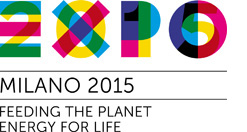
What about Milan 2015?
For Milan Expo 2015 a Commissioner General has not yet been appointed. It is not known at this time when a Milan CG will be appointed, but the Request for Proposals issued by the Department of State for Milan stated that only after the applicant is able to demonstrate that all funding required for this project (estimated at $45 million) will be in hand will the Department of State appoint a CG.
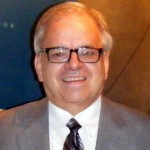
About the author – In the matter of organizing a world’s fair pavilion, James Ogul is a top human resource. At such times as the United States has stepped up to participate in a world expo, from the early ‘80s to the present more often than not Ogul has been tapped to help coordinate the effort on the government side. Since retiring from the US State Department in 2011, he has remained connected to the international expo scene in an advisory and consulting role.
His next several columns will give an overview of U.S. pavilions at world expos from 1982 to the present.


